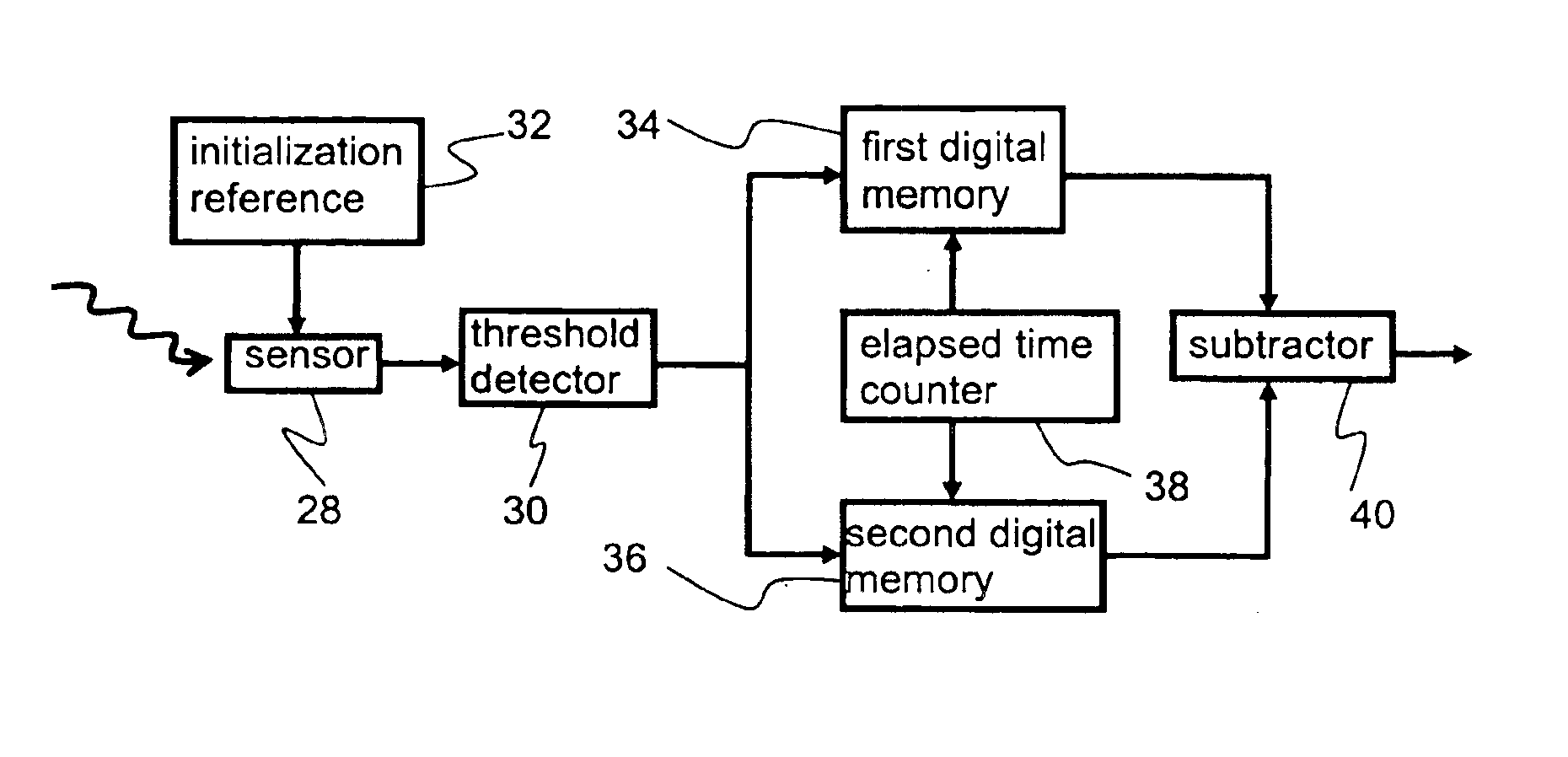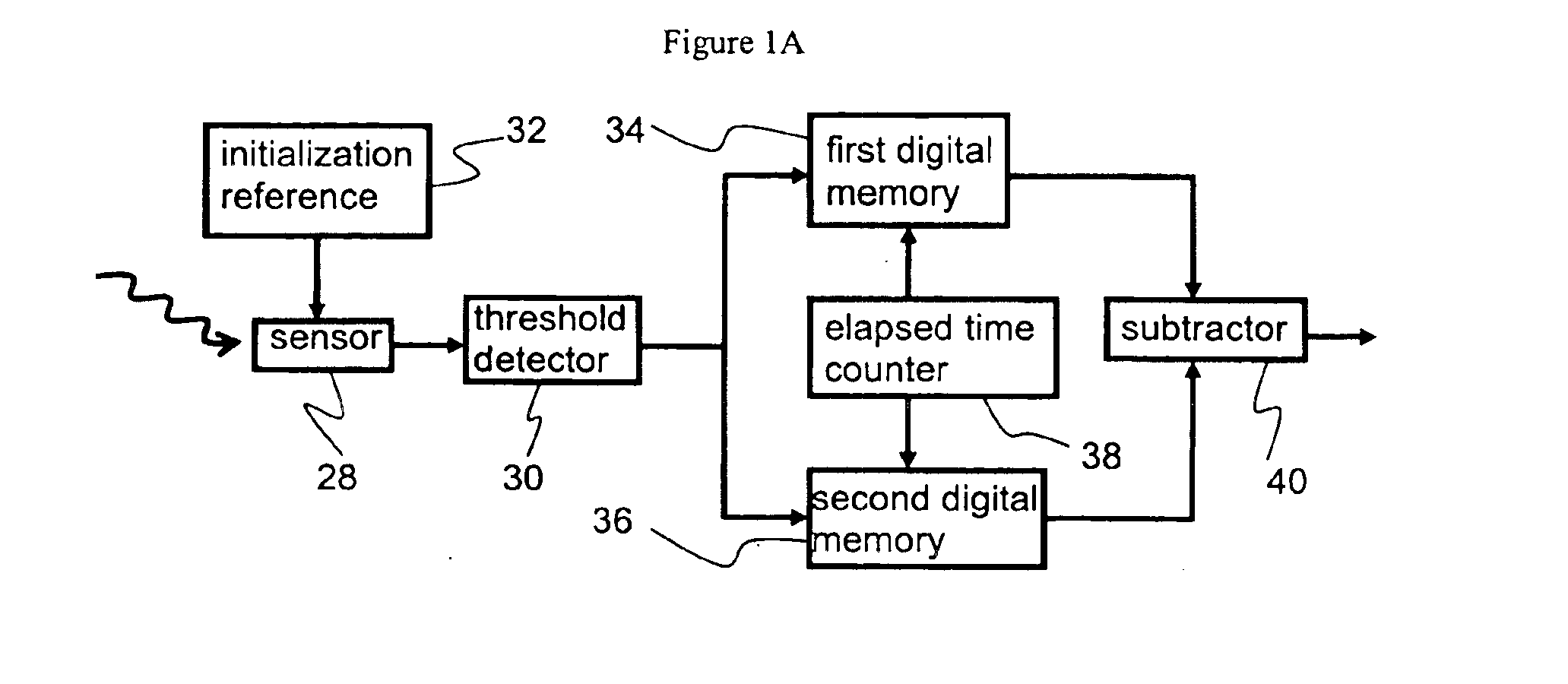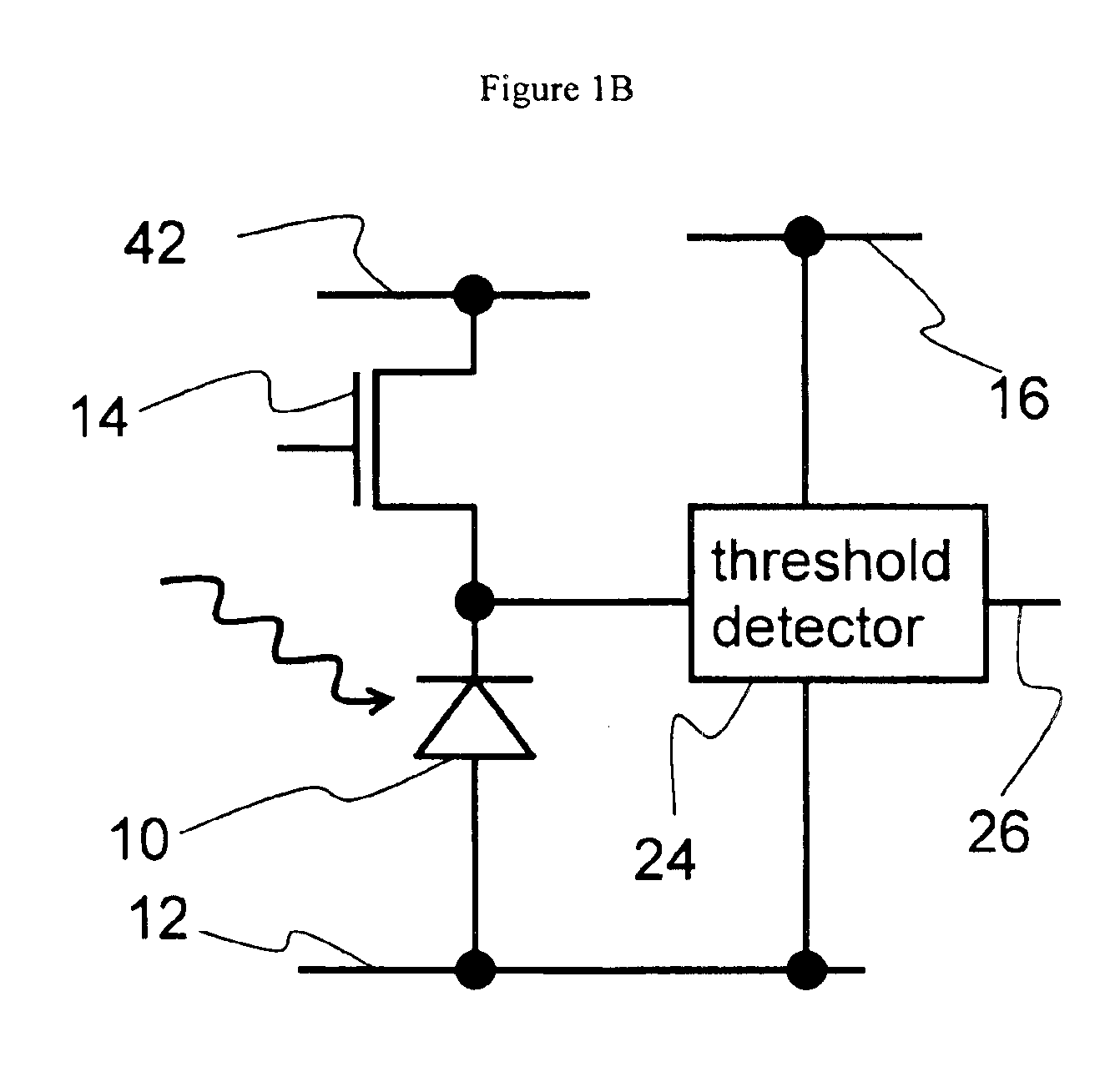Differential time-to-threshold A/D conversion in digital imaging arrays
- Summary
- Abstract
- Description
- Claims
- Application Information
AI Technical Summary
Benefits of technology
Problems solved by technology
Method used
Image
Examples
Embodiment Construction
In the preferred embodiment of the invention, a first time-to-threshold conversion measurement and a second time-to-threshold conversion measurement are acquired using a first sensor and a first threshold-detecting circuit, but different initial sensor output values.
FIG. 1A shows a block diagram of a system for the preferred embodiment of the invention. First sensor 28 is connected to first threshold detector 30. For the first time-to-threshold measurement, first sensor 28 is initialized to a first initial output value on the basis of a reference signal supplied by initial sensor output reference 32.
The output of first threshold detector 30 is a digital indicator signal. It is passed to first digital memory 34 during the first measurement. First digital memory 34 records a first digital count value provided by digital counter 38 when the output of first threshold detector 30 indicates the threshold has been reached.
For the second measurement, the output of first sensor 28 is initial...
PUM
 Login to View More
Login to View More Abstract
Description
Claims
Application Information
 Login to View More
Login to View More - R&D
- Intellectual Property
- Life Sciences
- Materials
- Tech Scout
- Unparalleled Data Quality
- Higher Quality Content
- 60% Fewer Hallucinations
Browse by: Latest US Patents, China's latest patents, Technical Efficacy Thesaurus, Application Domain, Technology Topic, Popular Technical Reports.
© 2025 PatSnap. All rights reserved.Legal|Privacy policy|Modern Slavery Act Transparency Statement|Sitemap|About US| Contact US: help@patsnap.com



